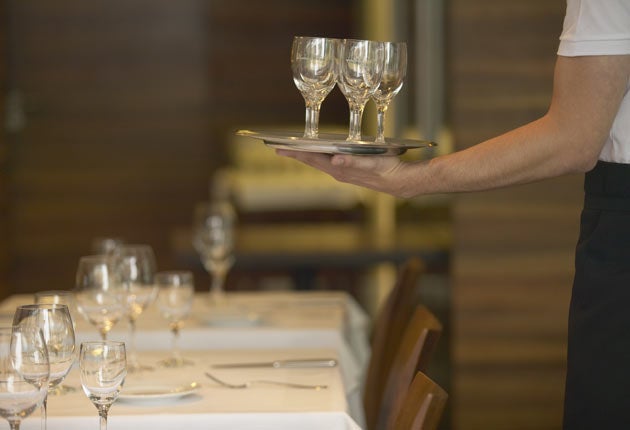Raise a glass to Kentish vineyards
English Wine Week starts today, so to get a taste for it, Sally Hawkins takes a vintage break in Kent

English wine," emphasised Nigel, my guide at Biddenden Vineyards, gently correcting my mistake. "British" wine, he was keen to point out, can be made using grapes flown in from anywhere in the world. As we wound our way through Biddenden's vineyard, I began to understand his eagerness to clarify my misapprehension.
While the Romans had vineyards spread widely across Kent by AD250, they left no legacy of wine-making. So when the Barnes family planted their first acre of vines in 1969 they were true pioneers, going about it through a process of trial and error.
The biggest question hanging over them was whether it was really possible to grow vines in the English climate: a late or early frost can ruin a crop. Four decades on, Biddenden is the oldest commercial vineyard in the county, with 22 acres of vines. Kent now has more than 350 acres of vineyards, and English wines are raking in awards (including two gold, 14 silver and 20 bronze medals at the 2011 International Wine Challenge, the Oscars of the wine world). To celebrate all this vinery, English Wine Week starts today.
It's all very exciting for oenophiles. As Julian Barnes, second-generation wine-maker at Biddenden, explained: "While the varieties of grapes are German [such as ortega and dornfelder] or French [such as pinot noir] they are grown in England – and the local conditions and soil influence the flavours of the wine."
In Biddenden's farm shop, shelves heave with local produce including the farm's own wines and ciders (all free to taste). "What produce is Kent famous for?" asked Nigel. "The same nutrients they take from the soil are going into the grapes that make the wine." With one slurp of the Gribble Bridge Ortega 2009, I understand: apples, pears, elderflower. The 2007 Pink Sparkling has hints of strawberry. You can't get more English than that.
Shopping bags clanking, we left Biddenden, and zigzagged (soberly) through the Kentish countryside passing oast houses rising from fields of oilseed rape. Just past Tenterden on the B2082, a blink-and-you'll-miss-it sign advertises Harbourne Vineyard. As we pulled into the drive, Laurence Williams emerged from the tiny shop built on to his family home. He pointed to a spot on the hillside where Henry VIII's boatyard once stood, explaining that his 1.2-acre vineyard – five miles from the coast – is growing on what would have been the seabed.
In the shop I tasted the Harbourne Old Vines Rosé – 25-year-old vines producing a complex dry taste with plum flavours – and a citrusy Seyval Blanc Dry 2005. Laurence uses traditional methods with minimal intervention and, he says: "The grapes are crushed gently so there's no risk of getting off-flavours from crushed pips or stalks."
Next we turned west towards Tunbridge Wells, to Sandhurst Vineyards, which is set in a patchwork landscape of raspberry canes, cherry orchards and hop fields. Anne Nicholas, the owner, let me sample Sandhurst's wines and ales, tempting me with a summery bacchus and a spicy pinot noir; I left with a bottle of each.
Further west we were directed to Lamberhurst Vineyards. A restaurant, shop and spa are due to open there next month; we followed a signposted walk through the peaceful vineyards with views across the Teise Valley. That night, Tunbridge Wells provided further immersion in my theme. The Hotel du Vin & Bistro has its own tiny vineyard. At dinner the sommelier, Victor, revealed that he was planning to make the hotel's own sweet wine with next year's harvest.
Next morning we made for Chapel Down, which has established itself as a world-class winery (winning one of the gold medals at this year's International Wine Challenge for its rosé brut, reportedly served at the royal wedding last month). It's possible to spend a day here exploring the vineyards, picnicking on local delicacies or lunching at Richard Phillips' restaurant, where the Michelin-starred chef serves modern English classics, such as braised Kentish lamb shoulder or whole native lobster.
My guide, Jo, led me through vines and warehouses – and Chapel Down's enormous success quickly became clear: 120 acres of vines across Kent and Sussex; crates of the stuff marked for Waitrose and Marks & Spencer; shiny new machinery everywhere. And then there's the wine itself: a fragrant sparkling Pinot Reserve 2004 with hints of strawberry and baked apple was my favourite.
The wine route through the Garden of England is an intoxicating mix of technology (Chapel Down's science lab), home-spun charm (Biddenden's family enterprise) and the great outdoors (Harbourne's focus on natural methods). One thing the wine-makers all share is a passion – not just for wine but for English wine. I'll drink to that.
Subscribe to Independent Premium to bookmark this article
Want to bookmark your favourite articles and stories to read or reference later? Start your Independent Premium subscription today.

Join our commenting forum
Join thought-provoking conversations, follow other Independent readers and see their replies